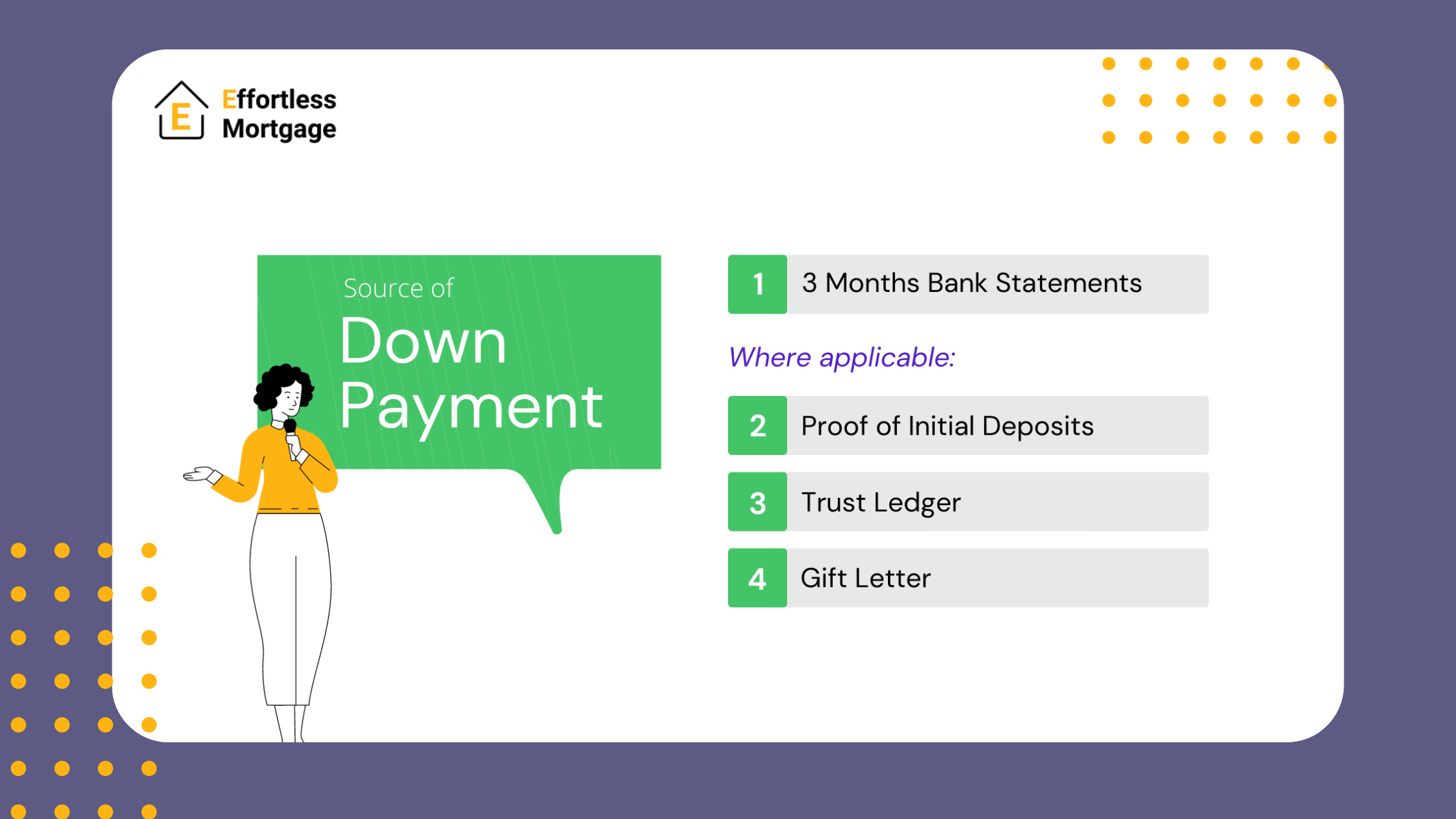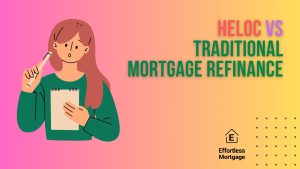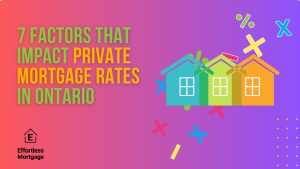
What You Need to Know to Prove the Source of Your Down Payment (for Home Buyers)
First off, it is important to know that, due to the anti-money laundering legislation, all lenders are required to show a paper trail for the source of down payment covering a period of 90 days.
Second, it is important to know that proving the source of down payment to purchase a home can be a very stressful part of the mortgage journey … or, it can be a piece of cake.
The difference is in how prepared you are.
We are going to help you get prepared, so you don’t worry and this part of the mortgage journey will be a piece of cake.
Proving the source of your down payment really means that you have to show exactly where the money for your down payment is coming from, i.e. cash gift from a family member, investments, savings, RRSPs, sale of a home, etc.
Once your offer has been accepted, the mortgage lender will have “outstanding conditions” for you and your broker to satisfy including proving and sourcing your down payment.
By having a better understanding of what the lender will be looking for, as well as the reasoning, the process will be much easier and faster.
Below are the FOUR typical sources of down payment most lenders will ask for.

3 Months Bank Statements
The mortgage lender will need to see a 90-day history from the bank accounts the funds are in. If the funds were transferred from other accounts including the donor’s for gifted funds, the lender will also need to see a 90-day history of those accounts (where the funds came from).
Here’s the general rule of thumb:
- Provide FULL bank statements showing account ownership, account number and without any items blacked / crossed out.
- Downloaded PDFs from banks are preferred or printed statements that are scanned and emailed.
- Screenshots are acceptable as long as they show account ownership and account number.
Additionally, if there are any large deposits of $1,000 or greater (payroll excluded), then you’ll be asked to show support for those deposits. For example, if your statements show a $3,000 transfer, then the lender will need to see a 90-day history from the account the funds were transferred from. If the new statements provided show another transfer of $10,000, then the lender will need to see a 90-day history from the source account for that transfer as well. This can go on and on, which can lead to additional stress and frustration to the borrower. Hence, it’s best to be prepared.
You may want to consider putting together a simple guide explaining each deposit, its source, along with the additional bank statements to support it.

Proof of Initial Deposits
It’s guaranteed that for any home or new builds that you are purchasing, there are initial deposits required when you make an offer to purchase.
These initial deposits are part of your down payment.
The lender will ask for the source of your initial down payment and proof that the deposits were made.
Typical source documents to prepare to provide to the lender are:
- Receipt from the real estate office
- Wire/draft receipts from bank
- Bank statement the deposit(s) came from
- Gift letter from family donor (where applicable)
- Donor’s bank statement showing where the funds came from

Trust Ledger
If your down payment will be coming from a sale of a home, the mortgage lender will ask for a copy of the trust ledger for the sale of that home.
If the sale of the home and the purchase of a new are happening on the same day, you will need your lawyer to create a DRAFT TRUST LEDGER. The lender will ask for it. The draft trust ledger will show the expected funds available for down payment.
Don’t delay in making sure you have your trust ledger ready. The lender will not commit to funding until they have received it and reviewed it.

Gift Letter
One of the most common sources of down payment for first time homebuyers is a gift from an immediate family member.
Gifts are accepted from immediate family members only. Parents, grandparents, or siblings. Gifts from cousins, aunts, uncles, boyfriends, girlfriends and friends will not be accepted.
If any part of your initial deposit(s) and/or down payment is gifted to you by a family member, a gift letter signed by the donor will be required.
The mortgage lender wants to know the the gifted funds will not need to be paid back.
Be prepared also that the mortgage lender might ask for the donor’s 90-day bank statements where the monetary gift came from. This is rare when the donor lives in Canada. However, if the donor lives outside of Canada, then the lender will need to know which country the gift came from. And, the lender might also ask for a copy of the wire transfer.
Will You Be Prepared So You Don’t Worry?
Mortgage lenders have strict rules that they need to follow. Sometimes, it may seem over the top, ridiculous or redundant.
However, when it comes to staying compliant with anti-money laundering legislation, we can all appreciate the WHY.
Of course, at Effortless Mortgage, we are available to you 7 days a week. Have any questions? Ask away.







